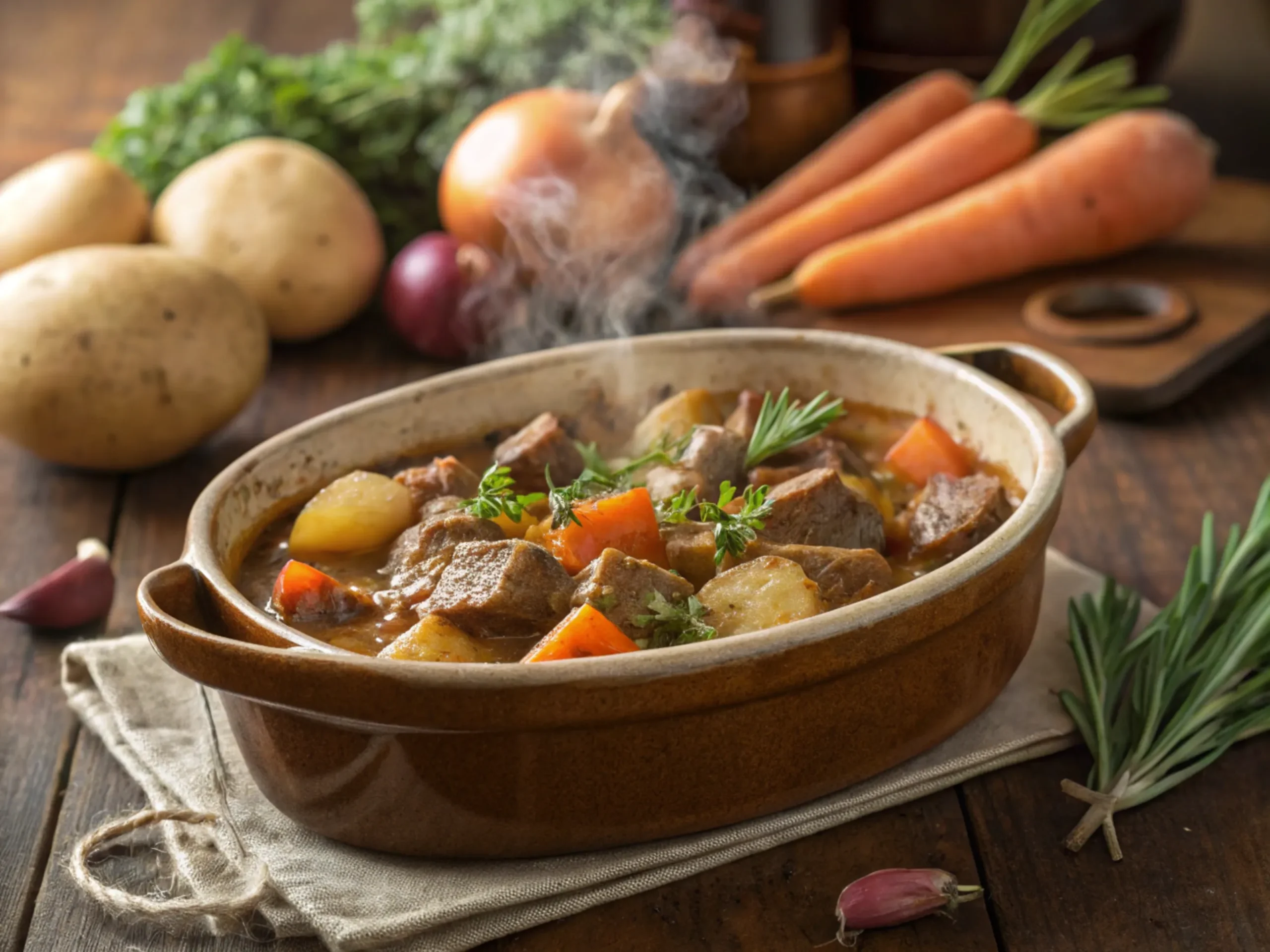Which cut of pork is best for casserole? Choosing the right cut is essential for creating a tender, flavorful, and hearty dish. When it comes to comfort food, few meals can compete with a well-made pork casserole. The right cut determines the texture, richness, and overall success of your recipe. In this article, we’ll explore the best pork cuts for casseroles, how to prepare them, and expert tips to ensure your dish turns out perfectly every time.
Table of contents
What Makes a Pork Cut Ideal for Casseroles?
Not every cut of pork, admittedly, works well for a casserole. Consequently, choosing the wrong one can lead to a dish that is dry, tough, or lacking flavor. Therefore, to avoid this, focus on a cut that thrives in slow-cooking methods.
Key Factors to Look For
- Fat Content: Pork cuts with more fat stay moist and flavorful during long cooking times.
- Connective Tissue: Cuts with connective tissue soften and become tender when slow-cooked.
- Flavor Profile: Richer cuts add depth to the dish, making the casserole more satisfying.
Using the right cut of pork can turn an ordinary casserole into an extraordinary one. Let’s dive into the best options for your next culinary creation.
Top Cuts for Casseroles
Choosing the right pork cut is, undoubtedly, critical. Accordingly, here are the best options for creating flavorful and tender casseroles.
Pork Shoulder (Boston Butt)
The pork shoulder, unquestionably, stands out as the best cut for casseroles. Accordingly, it offers a perfect balance of fat and connective tissue, which, during cooking, melts beautifully into the dish. Moreover, this cut pairs well with bold flavors and hearty vegetables. For instance, it’s ideal for recipes like pork and apple casseroles, where sweetness and savoriness blend harmoniously.
Tip: Cut the shoulder into large chunks to maintain its structure during cooking. Learn how to make a classic pork and apple casserole here.
Pork Belly
If you’re looking for indulgence, pork belly is your go-to option. This cut is rich, fatty, and adds a luxurious texture to casseroles. The layers of fat and meat create a unique balance, perfect for slow-cooked dishes.
Pro Tip: Render some of the fat before cooking to prevent the dish from becoming overly greasy.
Loin and Tenderloin
Although these cuts are leaner, they can work in casseroles with careful preparation. Use plenty of liquid, such as stock or wine, to keep them moist. Add herbs and spices for a flavor boost.

How to Make the Perfect Pork Casserole
Making a delicious pork casserole doesn’t have to be complicated. Here’s a simple recipe to get started.
Ingredients You’ll Need
| Ingredient | Amount | Notes |
|---|---|---|
| Pork shoulder | 2 lbs | Substitute with pork belly |
| Onions | 2 medium | Finely diced |
| Apples | 3 large | Peeled and cubed |
| Carrots | 2 medium | Sliced thin |
| Chicken stock | 4 cups | Substitute with pork stock |
| Thyme | 1 tbsp | Fresh is best |
| Salt and pepper | To taste | Adjust to preference |
Step-by-Step Instructions
- Prep the Pork: Start by cutting the pork into chunks. Season with salt and pepper.
- Brown the Meat: Heat a skillet over medium heat. Sear the pork until all sides are golden brown. This step locks in flavor.
- Sauté Vegetables: In the same pan, sauté onions and carrots until softened. Add apples and cook briefly.
- Combine Ingredients: Place the pork and vegetables in a casserole dish. Add thyme and pour chicken stock over the mixture.
- Slow Cook: Cover the dish with a lid and bake at 325°F (165°C) for 2-3 hours. Check occasionally and stir if needed.
- Serve and Enjoy: Once the pork is tender, serve with crusty bread or mashed potatoes.
For more inspiration, discover which apples pair best with pork.
Common Mistakes to Avoid
Even the best casserole recipes can go wrong without attention to detail. Here are some mistakes to watch out for:
Using the Wrong Pork Cut
Not every cut of pork is suited for a casserole. Lean options, like chops, dry out quickly and lose their tenderness. Stick with pork shoulder or belly for reliable results.
Skipping the Searing Step
Searing the pork before slow cooking adds a layer of flavor that enhances the entire dish. Without this step, the meat can taste bland.
Overcrowding the Dish
Ensure there’s enough space for heat to circulate around the ingredients. Overcrowding can lead to uneven cooking.

Expert Tips for Elevating Your Pork Casserole
A few simple tricks can take your pork casserole to the next level:
- Use Fresh Herbs: Ingredients like thyme, rosemary, and bay leaves complement pork beautifully. Add them early to infuse the dish with flavor.
- Deglaze the Pan: After searing the pork, use wine or stock to scrape up the browned bits. This adds depth to your casserole.
- Choose the Right Cookware: A heavy casserole dish or Dutch oven helps distribute heat evenly, ensuring your dish cooks perfectly.
Dynamic Content: Variations, Mistakes, and Expert Tips
A casserole, unquestionably, is the perfect dish for showcasing creativity in the kitchen. Accordingly, by experimenting with ingredients and techniques, you can transform a classic recipe into something truly unique. Moreover, this section will explore ways to enhance your casserole, avoid common mistakes, and master the art of cooking the best pork casserole.
Creative Variations for Your Pork Casserole
Adding a twist to your casserole can make it more exciting and tailored to your taste. Here are some ideas:
- Seasonal Ingredients: Use squash, sweet potatoes, or cranberries in the fall. In spring, opt for fresh herbs, peas, and asparagus for a lighter touch.
- Global Flavors: For an Asian-inspired dish, add ginger, garlic, soy sauce, and sesame oil. For a Mediterranean feel, try olives, sun-dried tomatoes, and oregano.
- Rich Additions: Include cream or cheese to make the dish indulgent. Alternatively, lighten it with a broth-based sauce for a healthier option.
Pair these variations with the best cut of pork for casseroles, such as shoulder or belly, to ensure your dish is both flavorful and tender.
Common Mistakes to Avoid
Avoiding these mistakes can help you create a flawless casserole:
- Skipping the Sear: Always brown your pork before assembling the dish. This step locks in flavor and gives the meat a richer texture.
- Using Lean Cuts: Lean cuts like pork chops or loin can dry out during slow cooking. Stick to pork shoulder or belly, which hold up better in casseroles.
- Not Enough Liquid: Use enough liquid, such as stock or wine, to keep the casserole moist. Covering the dish during cooking also helps prevent dryness.
- Overcrowding the Dish: Leave space between ingredients to ensure even cooking. Overcrowding can make the dish soggy or unevenly cooked.

Expert Tips for the Perfect Pork Casserole
Even with the best ingredients, a few extra steps can elevate your dish:
- Fresh Herbs: Add thyme, rosemary, or parsley to enhance the flavor. Introduce these early in the cooking process for the best results.
- Deglaze the Pan: After searing the pork, use wine or stock to scrape up the browned bits. This adds a deep, savory flavor to your casserole.
For more inspiration, explore the benefits of using apple cider vinegar in pork dishes. This ingredient can introduce a tangy, complex note that enhances the overall flavor.
FAQs: Your Questions Answered
Creating the best pork casserole raises many questions, especially for beginners. Below, we address common concerns and provide expert guidance.
What is the best cut of pork for a casserole?
The best cut for casseroles is pork shoulder. Its fat and connective tissue melt during slow cooking, creating tender, flavorful meat. Pork belly is another great option for its richness.
Which is better, pork belly or pork shoulder?
Both cuts are excellent, but they suit different tastes. Pork shoulder is versatile and works well in most casseroles. Pork belly offers a richer, more indulgent flavor for special occasions.
What pork cut is good for stews?
Pork shoulder is ideal for stews, as it stays tender and absorbs flavors well. Pork belly can also work if you want a fattier, more luxurious texture.
Can pork loin be used in casseroles?
Yes, but it needs careful preparation. Pork loin is lean, so it can dry out. Use plenty of liquid and avoid overcooking it.
Can casseroles be frozen?
Yes! Allow the dish to cool completely before transferring it to a freezer-safe container. Frozen casseroles can last up to three months and make for an easy meal later.
How do you prevent a casserole from drying out?
To prevent dryness, ensure there’s enough liquid in the dish. Cover the casserole with a lid or foil while it cooks. Stirring occasionally can also help keep it moist.
What side dishes go well with pork casseroles?
Crusty bread, mashed potatoes, and roasted vegetables are classic accompaniments. A fresh green salad or steamed greens can also balance the richness of the dish.
If you’re looking to add sweetness, discover the best apples to enhance your pork dishes. Their natural sweetness balances pork’s savory profile beautifully.

Pro Tips & Final Variations
Once you’ve mastered the basics, consider adding modern touches to your casserole. This will make it even more memorable.
Enhancing Flavors
- Citrus Zest: Add lemon or orange zest for a refreshing tang.
- Spices: Introduce heat with chili flakes or smoked paprika.
- Savory Boost: Include mushrooms, soy sauce, or Worcestershire sauce for an umami kick.
Serving Suggestions
- Serve the casserole in individual dishes for a sophisticated touch.
- Garnish with fresh parsley or grated cheese to elevate the presentation.
- Pair it with sparkling cider or a dry white wine to complement the dish’s flavors.

Conclusion
Creating a pork casserole that is tender, flavorful, and satisfying undeniably begins with selecting the right cut of pork. Accordingly, pork shoulder and belly are the top choices because they provide the perfect balance of flavor and texture. By following this guide, experimenting with variations, and avoiding common mistakes, you can, undoubtedly, master the art of pork casseroles. Whether you stick to a traditional recipe or, conversely, explore creative twists, this dish is guaranteed to impress.
Finally, try these ideas in your kitchen and, thereafter, enjoy the ultimate comfort food experience! Learn more about pork and its culinary uses on Wikipedia.

